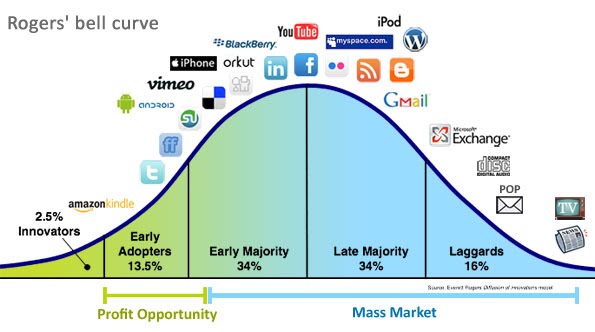Innovation Management

Nikita Rai | Sept. 17, 2020, 11:02 a.m.
Have you ever thought about how some brands become so successful in a small period while some don’t gain expected recognition even after years of being into business? Have you ever questioned why several brands simply disappeared from the market even after being at the peak of success just a few years back? Or have you ever wondered how you can make your brand stand out of the crowd in this time of digitization where new trends are fleeting every day? Well, getting an answer to all such questions is not a hard nut to crack. It all depends on the innovative strategies that you adopt for your brand!
What is Innovation and How does it make your brand distinctive?
By definition, Innovation is the act of introducing anything new which is relevant as well as new. It doesn't matter if the inspiration for your new innovative product is in the roots, say 200 years ago, but the implementation should be unheard and unseen before you introduce it. It doesn’t matter if you are a teenager who is just beginning with a start-up idea or if you are already a successful entrepreneur with a well-established business, innovation and its right management will make your brand sustain in the long run.
Coming to the distinctive bit, if you are a young entrepreneur, planning to be one soon, or even running a business already, then innovation is the key if you want to see your venture thriving even after 20 years from now. And rightly so because no matter how good your brand identity is or how good your initial strategies are, if you do not plan to offer new things at regular intervals to keep your brand noticeable, you might be risking the relevance of your venture in the long run.

Image Source: Getty Images
What is Innovation Management?
It is as simple as the term indicates. Innovation Management is the right management of innovation for your brand ideologies in terms of formulating and implementing your innovative strategies. It involves all the steps right from the introduction of an idea on a sheet of paper up to advertising it in a manner that it catches the attention of the market. Also, Innovation Management requires input from people of every tier of the team and it involves the other side of the table as well i.e., the consumers. The picture below shows different categories of people (y-axis) with-respect-to the time (x-axis) of the introduction of the new product-

Image Source: Research Gate
And here is an image to give you an idea of which apps and websites are these categories of people using currently-

Image Source: Google Sites
We can see that the graph starts rising after Innovators and starts declining after the Late Majority. This indicates that after laggards are done using the product, there are high chances that the graph will get steeper causing the end of the life cycle of that product. So, it is not wrong to say that a brand should start planning its new and advanced products as the earlier product reaches the Early Adopters Stage and launch the new product by the time that the earlier one is at the Late Majority stage. As a result of this step, the market will never run out of your innovated and modified products and it will keep the consumers' interest invested in your brand.
Innovation Management Strategy
The picture below shows the lifecycle of one innovative strategy.

Image Source: Iqms Global
Discover- This stage involves the identification of the requirement of innovation in an existing product or creating a new product altogether.
Ideate- As per what has been discovered, an idea should be drafted to put the required innovation into practice. Again, every member of the team should be encouraged to collaborate to get the best of ideas on the table.
Staged or Gate driven development- This process is also called the waterfall process. In this process, the idea to be implemented is divided into several stages and these stages are called 'gates’. These gates are benchmarks to keep testing whether the idea can be converted into a project successfully or not.
Post Launch Continuous Improvement- As the phrase rightly suggests, this process is about making continuous changes in the product if there is a scope of improvement as per the needs of the consumers to widen the reach of the brand.
Portfolio and Life Cycle Management- At this stage, the reach and the acceptance of the product are monitored. It involves taking surveys, analyzing the rise or decline in the number of consumers, predicting an average lifecycle, and accordingly planning for a new product. After this, the Innovation Cycle begins again.
We just got an overview of the lifecycle that a product generally follows and how that lifecycle can be managed effectively. But these rules are not thumb-rules. Keep these rules as a base and build up your ideologies upon these rules. This will lead your brand towards a unique and secure road.
Header Image from Training Journal


